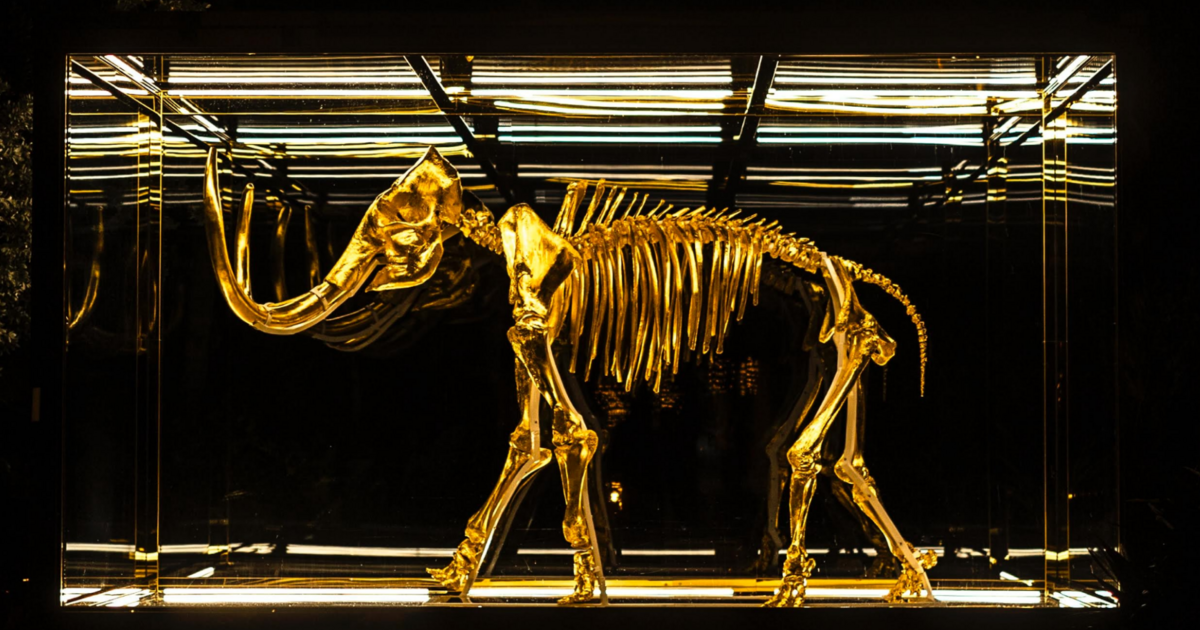Albert Cardona<p>Applied mathematicians work on the best problems. From Prof. Maria Bruna's group:</p><p>"Lane formation and aggregation spots in a model of ants", Bruna, M., Burger, M., & de Wit, O. (2024). <br><a href="https://arxiv.org/pdf/2401.15046" rel="nofollow noopener noreferrer" translate="no" target="_blank"><span class="invisible">https://</span><span class="">arxiv.org/pdf/2401.15046</span><span class="invisible"></span></a></p><p>"We investigate an interacting particle model to simulate a foraging colony of ants, where each ant is represented as an active Brownian particle. The interactions among ants are mediated through chemotaxis, aligning their orientations with the upward gradient of the pheromone field. [...] our study introduces a parameter that enables the reproduction of two distinctive behaviors: the well-known Keller–Segel aggregation into spots and the formation of traveling clusters, without relying on external constraints such as food sources or nests. [...] Remarkably, the mean-field PDE not only supports aggregation spots and lane formation but also unveils a bistable region where these two behaviors compete."</p><p><a href="https://mathstodon.xyz/tags/ants" class="mention hashtag" rel="nofollow noopener noreferrer" target="_blank">#<span>ants</span></a> <a href="https://mathstodon.xyz/tags/maths" class="mention hashtag" rel="nofollow noopener noreferrer" target="_blank">#<span>maths</span></a> <a href="https://mathstodon.xyz/tags/MathModeling" class="mention hashtag" rel="nofollow noopener noreferrer" target="_blank">#<span>MathModeling</span></a></p>
Recherches récentes
Aucune recherche récente
Options de recherche
Disponible uniquement lorsque vous êtes connecté.
mastouille.fr est l'un des nombreux serveurs Mastodon indépendants que vous pouvez utiliser pour participer au fédiverse.

Mastouille est une instance Mastodon durable, ouverte, et hébergée en France.
Administré par :
Statistiques du serveur :
577comptes actifs
mastouille.fr: À propos · Annuaire des profils · Politique de confidentialité
Mastodon: À propos · Télécharger l’application · Raccourcis clavier · Voir le code source · v4.3.4
#mathmodeling
0 message · 0 participant · 0 message aujourd’hui
EPPIcenter at UCSF<p>Workshop to Increase Diversity in Mathematical Modeling & Public Health March 27-28 Boston</p><p>Deadline Jan 15<br><span class="h-card"><a href="https://a.gup.pe/u/epiverse" class="u-url mention" rel="nofollow noopener noreferrer" target="_blank">@<span>epiverse</span></a></span><br><span class="h-card"><a href="https://med-mastodon.com/@idjclub" class="u-url mention" rel="nofollow noopener noreferrer" target="_blank">@<span>idjclub</span></a></span><br><a href="https://genomic.social/tags/IDMastodon" class="mention hashtag" rel="nofollow noopener noreferrer" target="_blank">#<span>IDMastodon</span></a> <a href="https://genomic.social/tags/epiverse" class="mention hashtag" rel="nofollow noopener noreferrer" target="_blank">#<span>epiverse</span></a> <a href="https://genomic.social/tags/MathModeling" class="mention hashtag" rel="nofollow noopener noreferrer" target="_blank">#<span>MathModeling</span></a> </p><p><a href="https://ccdd.hsph.harvard.edu/increase-diversity-in-mathematical-modeling-and-public-health" rel="nofollow noopener noreferrer" target="_blank"><span class="invisible">https://</span><span class="ellipsis">ccdd.hsph.harvard.edu/increase</span><span class="invisible">-diversity-in-mathematical-modeling-and-public-health</span></a></p>
nia<p>It is anxiety-producing to capture myself in hashtags, but here I go: <a href="https://union.place/tags/Democracy" class="mention hashtag" rel="nofollow noopener noreferrer" target="_blank">#<span>Democracy</span></a> <a href="https://union.place/tags/Democrat" class="mention hashtag" rel="nofollow noopener noreferrer" target="_blank">#<span>Democrat</span></a> <a href="https://union.place/tags/VoteBlue" class="mention hashtag" rel="nofollow noopener noreferrer" target="_blank">#<span>VoteBlue</span></a> <a href="https://union.place/tags/BlueWave" class="mention hashtag" rel="nofollow noopener noreferrer" target="_blank">#<span>BlueWave</span></a> <a href="https://union.place/tags/Socialism" class="mention hashtag" rel="nofollow noopener noreferrer" target="_blank">#<span>Socialism</span></a> <a href="https://union.place/tags/DSA" class="mention hashtag" rel="nofollow noopener noreferrer" target="_blank">#<span>DSA</span></a> <a href="https://union.place/tags/HumanRights" class="mention hashtag" rel="nofollow noopener noreferrer" target="_blank">#<span>HumanRights</span></a> <a href="https://union.place/tags/Peace" class="mention hashtag" rel="nofollow noopener noreferrer" target="_blank">#<span>Peace</span></a> <a href="https://union.place/tags/AbortionIsHealthcare" class="mention hashtag" rel="nofollow noopener noreferrer" target="_blank">#<span>AbortionIsHealthcare</span></a> <a href="https://union.place/tags/ProChoice" class="mention hashtag" rel="nofollow noopener noreferrer" target="_blank">#<span>ProChoice</span></a> <a href="https://union.place/tags/Feminism" class="mention hashtag" rel="nofollow noopener noreferrer" target="_blank">#<span>Feminism</span></a> <a href="https://union.place/tags/HigherEducation" class="mention hashtag" rel="nofollow noopener noreferrer" target="_blank">#<span>HigherEducation</span></a> <a href="https://union.place/tags/AcademicWorker" class="mention hashtag" rel="nofollow noopener noreferrer" target="_blank">#<span>AcademicWorker</span></a> <a href="https://union.place/tags/SystemsThinking" class="mention hashtag" rel="nofollow noopener noreferrer" target="_blank">#<span>SystemsThinking</span></a> <a href="https://union.place/tags/MathModeling" class="mention hashtag" rel="nofollow noopener noreferrer" target="_blank">#<span>MathModeling</span></a> <a href="https://union.place/tags/Dynamics" class="mention hashtag" rel="nofollow noopener noreferrer" target="_blank">#<span>Dynamics</span></a> <a href="https://union.place/tags/DynamicSystems" class="mention hashtag" rel="nofollow noopener noreferrer" target="_blank">#<span>DynamicSystems</span></a> <a href="https://union.place/tags/CollectiveAction" class="mention hashtag" rel="nofollow noopener noreferrer" target="_blank">#<span>CollectiveAction</span></a> <a href="https://union.place/tags/DistributedCognition" class="mention hashtag" rel="nofollow noopener noreferrer" target="_blank">#<span>DistributedCognition</span></a> <a href="https://union.place/tags/CoordinationDynamics" class="mention hashtag" rel="nofollow noopener noreferrer" target="_blank">#<span>CoordinationDynamics</span></a> <a href="https://union.place/tags/TimeSeriesAnalysis" class="mention hashtag" rel="nofollow noopener noreferrer" target="_blank">#<span>TimeSeriesAnalysis</span></a> <a href="https://union.place/tags/PublicEducation" class="mention hashtag" rel="nofollow noopener noreferrer" target="_blank">#<span>PublicEducation</span></a> <a href="https://union.place/tags/ScienceIsReal" class="mention hashtag" rel="nofollow noopener noreferrer" target="_blank">#<span>ScienceIsReal</span></a> <a href="https://union.place/tags/LoveIsLove" class="mention hashtag" rel="nofollow noopener noreferrer" target="_blank">#<span>LoveIsLove</span></a> <a href="https://union.place/tags/LGBTQ" class="mention hashtag" rel="nofollow noopener noreferrer" target="_blank">#<span>LGBTQ</span></a> <a href="https://union.place/tags/Ally" class="mention hashtag" rel="nofollow noopener noreferrer" target="_blank">#<span>Ally</span></a> <a href="https://union.place/tags/TransRights" class="mention hashtag" rel="nofollow noopener noreferrer" target="_blank">#<span>TransRights</span></a> <a href="https://union.place/tags/BLM" class="mention hashtag" rel="nofollow noopener noreferrer" target="_blank">#<span>BLM</span></a> <a href="https://union.place/tags/UnionStrong" class="mention hashtag" rel="nofollow noopener noreferrer" target="_blank">#<span>UnionStrong</span></a> <a href="https://union.place/tags/Solidarity" class="mention hashtag" rel="nofollow noopener noreferrer" target="_blank">#<span>Solidarity</span></a> <a href="https://union.place/tags/WorkersRights" class="mention hashtag" rel="nofollow noopener noreferrer" target="_blank">#<span>WorkersRights</span></a> <a href="https://union.place/tags/UniversalHealthcare" class="mention hashtag" rel="nofollow noopener noreferrer" target="_blank">#<span>UniversalHealthcare</span></a></p>
ExplorerFlux en direct
Mastodon est le meilleur moyen de suivre ce qui se passe.
Suivez n'importe qui à travers le fédivers et affichez tout dans un ordre chronologique. Ni algorithmes, ni publicités, ni appâts à clics en perspective.
Créer un compteSe connecterGlissez et déposez pour envoyer
